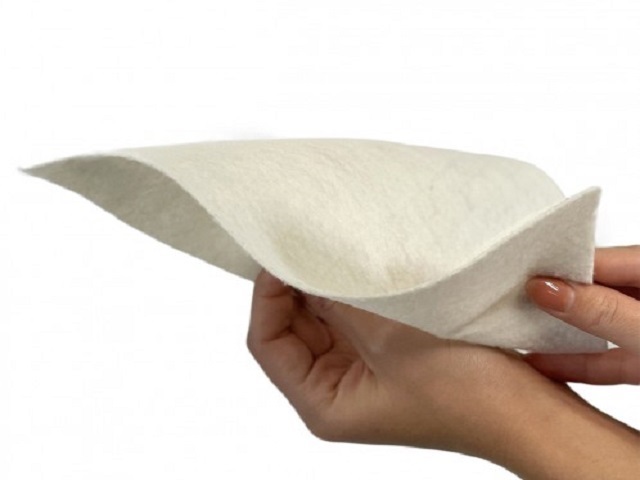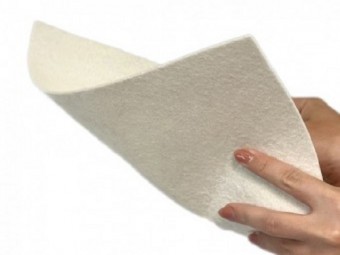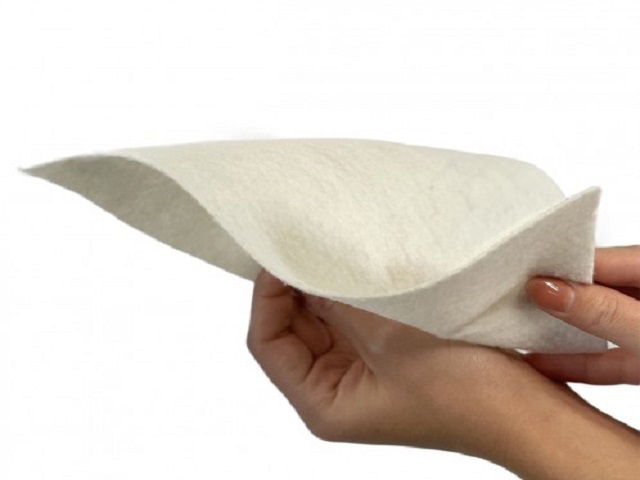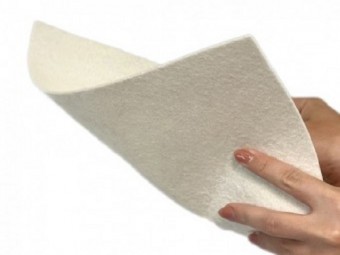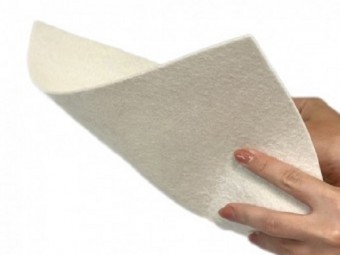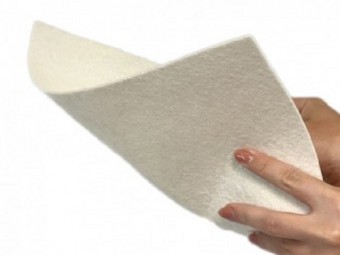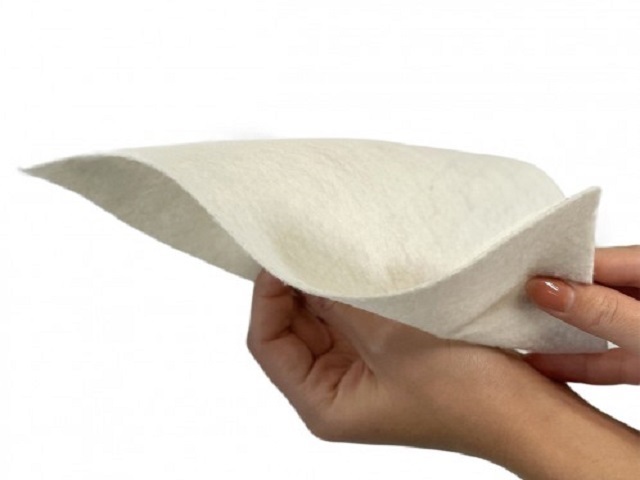Thermofixed geotextile with a density of 200g/sq.m (Ukraine)
Product code: 0146
Application in road construction, for filtration and drainage systems, for hydraulic structures
3144 uah
Thermofixed geotextile is a non–woven material made by passing a mass of ready-made raw materials from very thin threads through a number of harpoon needles that, piercing the mass of raw materials, entangle the threads with each other.
Technology: Granulated polypropylene is extruded into fibers, which are further processed first on a carding machine, and then on a needle punching machine.
Many types of products undergo heat treatment with infrared radiation, hot air or calendering.
Main advantages:European quality of materials, availability of all necessary certificates
- environmental safety
- has a long service life (more than 25 years)
- it has excellent water permeability
- resistant to mold, does not rot and is not subject to corrosion
- unique wear resistance
- high coefficient of stretching
- no stratification
Main functions:separation
- filtering
- drainage
- protection
- gain
- tension equalization
Application in construction:Road construction – separation of different layers of the road structure, reinforcement and increase of the bearing capacity of the road base;
- Civil engineering – used as a separating layer of various materials, and is also a reliable protection of membranes from mechanical damage;
- Filtration and drainage systems - prevents the penetration of fine-grained material into the drainage layer, protects drainage pipes from silting and strengthens the soil;
- Hydraulic structures – is a reliable protection of waterproof membranes from ruptures, prevents the erosion of the banks of rivers and lakes.
Specifications:Roll sizes: width - 2 m, winding – 50 m
Surface density - 120±6 g/m2
Roll width - 200 cm
Breaking force along the length - not less than 2.8 kN/m
Width breaking force - not less than 2.8 kN/m
Elongation at break along the length - no more than 60%
Elongation at break across width - no more than 90%
Roll size: 2m x 50-100 linear meters. m (100-200 sq.m.)
Material: polypropylene;
Density: from 100 to 200 g/sq.m;
White color.
Laying geotextiles is a process that plays a key role in construction, especially when working with road surfaces, soil structures and landscaping.
Here are a few steps to help you install geotextiles correctly:
Surface preparation : Make sure the surface on which the geotextile will be laid is free of debris, sharp objects and stones. If necessary, carry out preparatory work, including leveling and compacting the soil.
Selection and installation of geotextiles: Select the appropriate type of geotextiles to suit your project requirements. When laying geotextiles, ensure that they are distributed evenly and without folds over the entire surface. Make sure that the geotextile is not damaged during installation.
Layering: If you need to use several layers of geotextiles, lay them in such a way that each layer overlaps the previous one by a sufficient length (usually at least 10-20 cm). This will help prevent soil penetration and maintain the integrity of the structure.
Fixation of geotextiles: It is important to ensure reliable fixation of geotextiles so that they do not move during construction work or as a result of environmental influences. To do this, you can use fasteners, pins, weights or other special devices.
Checking the installation quality: After installation is complete, check the quality of the work done. Make sure that the geotextile is laid flat and without folds, that it is securely fastened, and that there is no unexpected damage.
Protection of geotextiles: After laying geotextiles, it should be protected from external influences such as ultraviolet radiation, mechanical damage and chemicals. To do this, you can use additional protective layers or special coatings.
Following these steps will help ensure that geotextiles are installed correctly and remain effective throughout their lifespan.
Remember that the correct use of geotextiles is important for the durability and stability of building structures.
Where to use geotextiles of a certain density?
Density 100-150 g/m² - for arranging lawns, decorative ponds, for separating layers of soil-crushed stone-screenings-sand, drainage systems, blind areas, inversion roofing (protective geomembrane), garden paths, sports grounds with artificial turf, sports grounds with natural grass, slopes.
Density 180-200g/m² – for the construction of foundations, sidewalks, artificial reservoirs, for the protection of waterproofing membranes, for the organization of drainage systems, as a separating layer of soil-crushed stone-assessment-sand, road work, parking lots, road surfaces, slopes, shelter for heat-loving plants .
Density 250 g/m² – construction of a building foundation, when paving paving slabs, construction of a parking lot, during the construction of roads for cars, for strengthening a slope, hydraulic engineering work, artificial reservoirs, reservoirs, drainage.
Density 300 g/m² - for the construction of highways, highways, roads for freight and technological transport, parking lots with heavy equipment, general purpose roads, as a reinforcing layer when strengthening embankments and slopes, as a protective layer when laying geomembrane, PVC membrane, geogrid.
What is the difference between needle-punched geotextiles and heat-fixed ones?
Geotextiles produced by the thermofixed method are heated during production, making the fabric stronger and more resistant to mechanical stress. The ability of the fabric to pass water becomes significantly lower. Therefore, if you need geotextiles with high water permeability, use needle-punched geotextiles; if strength is a priority, use thermofixed geotextiles. The choice of method for producing geotextiles depends on its technical characteristics.
What geotextiles should be used to construct a temporary road?
Temporary roads are subject to heavy loads, as they will be used not only by passenger cars, but also by large-sized technological vehicles. It is worth giving preference to a fabric with increased strength indicators - thermofixed geotextiles with a density of 200-300 g/m².
Related materials
Geotextile with needle-punched density 300 g/sq.m for drainage (Ukraine)
For use in the arrangement of drainage systems and in the agricultural sector
Thermofixed geotextile with a density of 300g/sq.m (Ukraine)
Application in road construction, for filtration and drainage systems, for hydraulic structures
Geotextile with needle-punched density 150 g/sq.m for drainage (Ukraine)
For use in the arrangement of drainage systems and in the agricultural sector
Thermofixed geotextile GEOKEN with density TRC 250 g/sq.m, rolls 2mX 50m (100 sq.m) (Türkiye)
Application in road construction, for filtration and drainage systems, for hydraulic structures
Thermofixed geotextile with a density of 150g/sq.m (Ukraine)
Application in road construction, for filtration and drainage systems, for hydraulic structures
Thermofixed geotextile with a density of 100g/sq.m (Ukraine)
Application in road construction, for filtration and drainage systems, for hydraulic structures
Geotextile with needle-punched density 200 g/sq.m for drainage (Ukraine)
For use in the arrangement of drainage systems and in the agricultural sector
© "Protex-S" LLC2021 | Website created by MD Design


